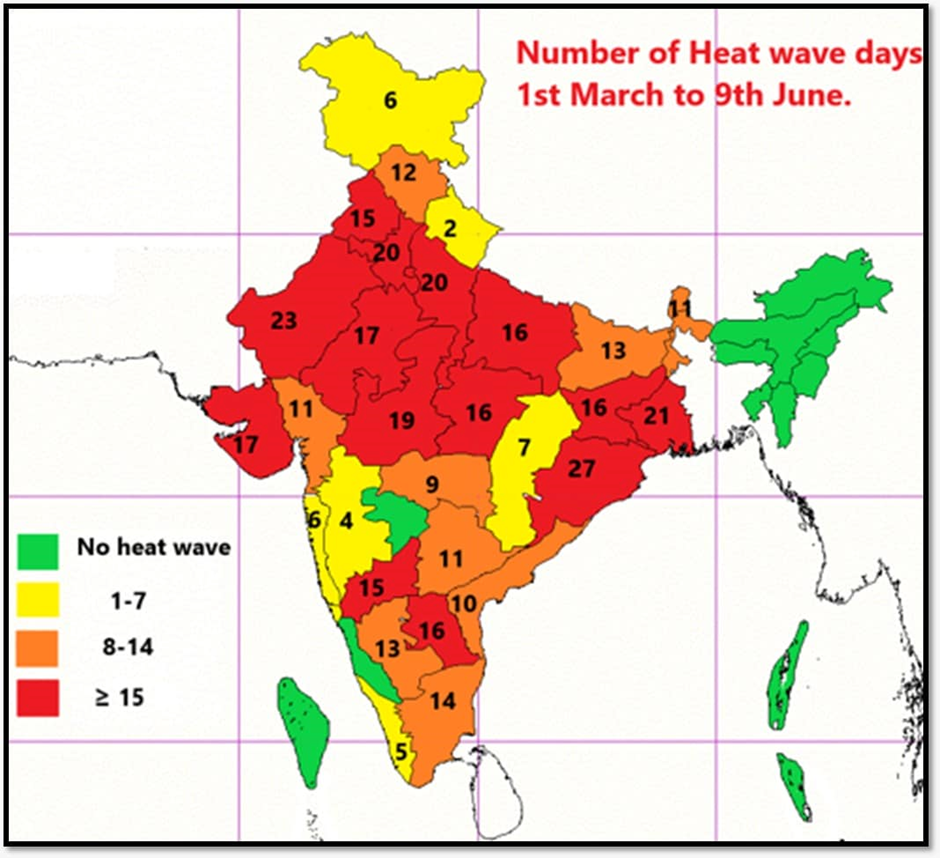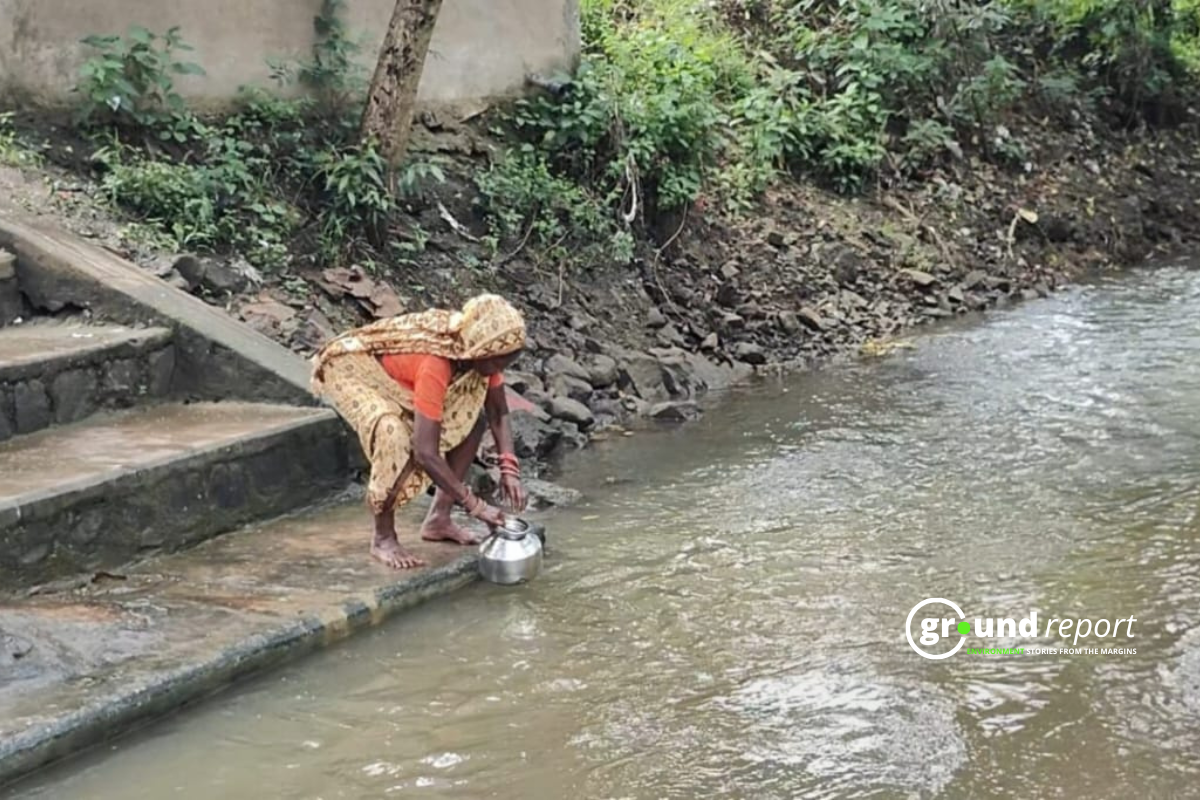India is experiencing an intense and unrelenting heatwave. An analysis shows that between April 1 and May 31, 2024, at least once, 70% of districts recorded temperatures exceeding 40°C. The India Meteorological Department (IMD) reported that the extreme heat continued into June, with 14 of the 36 subdivisions recording over 15 heatwave days from March 1 to June 9.
500+ districts exceeded 40°C
Down To Earth analysis showed that between April 1 and May 31, 2024, over 500 of the 741 districts in India had a maximum temperature over 40°C at least once. The data, which was based on gridded temperature readings, highlighted prolonged extreme heat stress in the nation.
“The intensity, duration, and spatial extent of this year’s heatwave have been unprecedented,” said Dr. Ayantika Dey Choudhury, an expert at the Indian Institute of Tropical Meteorology (IITM). “Prolonged high temperatures can have severe consequences for human health, agriculture, and ecosystems.”
The analysis identified Hingoli, Washim, and Akola in Maharashtra as the most heat-stressed regions in India during April-May. Hingoli had 48 out of 61 days with max temperatures above 40°C, followed by Washim with 47 days and Akola with 46 days.
“These numbers highlight the urgent need for heat action plans and adaptation strategies,” said Dr. Ayantika Dey. “Extreme heat threatens vulnerable populations, especially the elderly, children, and outdoor workers.”
IMD data shows widespread and prolonged heatwave conditions in India since March. Only the northeastern states, coastal Karnataka, and parts of Marathwada have been spared.
Odisha had most heatwaves; coastal and high-altitude affected
The most heatwave days were recorded in Odisha (27), followed by Rajasthan (23), Gangetic West Bengal (21), Haryana (20), Chandigarh (20), Delhi (20), and West Uttar Pradesh (20). High-altitude areas were affected as well, with Jammu and Kashmir observing six heatwave days, Himachal Pradesh recording 12 days, and Uttarakhand experiencing two. Coastal areas like Kerala and Tamil Nadu witnessed heatwave conditions, with five and fourteen heatwave days.
High-altitude areas like Himachal Pradesh reported 12 heatwave days, followed by Sikkim with 11, Jammu and Kashmir with 6, and Uttarakhand with 2.
M. Rajeevan, former secretary of the Ministry of Earth Sciences and a climate scientist, said, “This map shows a high number of heatwaves over India, as expected and predicted. Following an El Niño year, we tend to get more heatwaves due to favourable atmospheric circulation. Global warming adds to this. We will get more frequent, longer, and stronger heatwaves. We need to be prepared.”
According to Rajeevan, central and northwest India gets 6-8 heatwave days per year. The summer season is ongoing, so we don’t have complete data. However, there’s little doubt that this year’s heatwaves have been among the most intense ever recorded, if not the most. One possible reason is that this year follows an El Niño season, similar to 2010 when the following year also produced more intense heatwaves. But this is just one factor, and several others are contributing.”
Heatwaves are high temperatures for a region, with criteria varying based on historical temperatures. The impact is worsened by factors like high humidity, wind speed, and duration.
Heatwave declared based on region-specific temp
A heatwave is declared when the maximum temperature exceeds 40°C in the plains, 37°C in coastal areas, and 30°C in the hills, with a deviation from normal of 4.5-6.4°C. A heatwave is declared on the second day if the maximum temperature exceeds these thresholds for two consecutive days. A severe heatwave is declared when the deviation exceeds 6.4°C.
Last month marked a full year of record-high global temperatures. According to the US National Oceanic and Atmospheric Administration (NOAA), May 2024 was the warmest May on record. Earth’s ocean temperatures set a record high for the 14th consecutive month. The March-May period, the Northern Hemisphere’s spring and the Southern Hemisphere’s autumn, was the warmest on record at 2.32°F above average.
According to the Global Annual Temperature Rankings Outlook, there is a 50% chance that 2024 will be the warmest year on record and a 100% chance it will be in the top five warmest years.
Northwest India faces month-long heatwave
Mahesh Palawat, vice president of climate and meteorology at Skymet Weather, said, “This is one of the longest heatwave spells in northwest India. It’s been a month-long heatwave since late May, with a few days of respite. For other parts of the country, the heat spell started in April, with intermittent relief.”
The country experienced widespread heat stress, with certain regions facing severe conditions. In April, the southern districts of India, particularly in the Rayalaseema region of Andhra Pradesh, experienced the worst of the heatwave. Kurnool district reported 25 days with temperatures exceeding 40°C, followed by Jogulamba Gadwal in Telangana with 24 days.
In May, heat stress hit the western and west-central districts of Rajasthan and Madhya Pradesh. Burhanpur and East Nimar, in Madhya Pradesh, had 30 days with temperatures above 40°C. 15 districts in Rajasthan, Madhya Pradesh, and Gujarat had temperatures above 40°C for 29 out of 31 days in May.
In Madhya Pradesh and Rajasthan, all districts had at least one day with a maximum temperature above 40°C. In May, at least one day above 40°C was reported in 490 districts nationwide.
Despite grim statistics, weather experts predict an above-normal monsoon this year, offering hope for relief from the heat. Meanwhile, IMD predicted below-normal monsoon rainfall in June. The weather department said the country has received 20% deficient rains since the southwest monsoon set in over Kerala on May 30, with the rain making no significant progress between June 12 and 18.
Keep Reading
Part 1: Cloudburst in Ganderbal’s Padabal village & unfulfilled promises
India braces for intense 2024 monsoon amid recent deadly weather trends
Support us to keep independent environmental journalism alive in India.
Follow Ground Report on X, Instagram and Facebook for environmental and underreported stories from the margins. Give us feedback on our email id greport2018@gmail.com.
Don’t forget to Subscribe to our weekly newsletter, Join our community on WhatsApp, and Follow our YouTube Channel for video stories.







